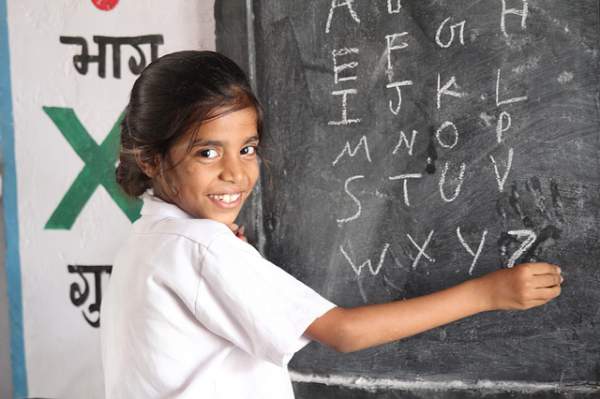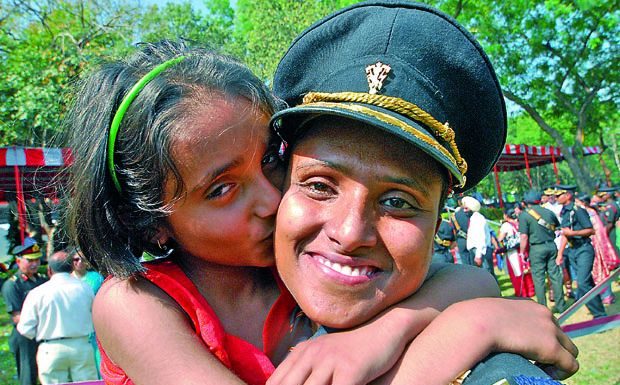All of us have heard stories about how girls are not allowed to study in rural areas. Parents force the girl child to not go to school (or make her drop out before completing primary education) in order to maintain the ‘family honour’, or due to their inability to afford cost of education. There are a few who do wish to see their children, including daughters, study and do well in life. However, societal and infrastructure related constraints prove to be major show stoppers. Most of us visualize girl education only crucial until primary school; we need to pay attention to what happens both before and after the primary school.

Image Courtesy : Pixelbay
While there are a slew of policies promulgated by successive Governments, lack of will and coordinated approach has led to little change in the sorry state of affairs. 62% of the school drop- outs in India under 18 years of age, are girls. This is not a very encouraging scenario in a country which has a ‘Right to Education’ act implemented with force, with the current Government’s flagship programme being “Beti Bachao Beti Padhao”. Just for understanding the criticality, a few statistical facts need to be mentioned:
(a) For every 100 girls in rural India, only 1 reaches class 12.
(b) 40 % girls leave school before class 5.
(c) 50 % girls are married before the legal age.
(d) Girls make up 75 % of illiterates in the age bracket of 15 to 24 yrs.
(e) Only 5 % Government schools comply with all basic standards of infrastructure set by RTE act.
(f) More than 30 % teachers in Government schools aren’t professionally trained.
(g) Around 1.2 million teachers are needed to fulfill RTE act requirements.
The biggest road block to a girl’s education in India is the mind-sets of a majorly patriarchal Indian society. This holds true especially in rural areas and some infamous states in northern and western India. India is a country where female infanticide and foeticide are prevalent even today; where honour killings / child marriages are still norms. In this scenario, how does one hope to ensure that girls are able to study and become equal partners in the growth of the family, society, and the country? In fact females are equally hardliners in the society when it comes to emancipation of girls which again is rooted in the absence of education and lack of exposure / visualization.
The way forward towards ensuring girls education in India has to be multi-pronged to tackle a number of issues simultaneously.
Government / Administration Level
- Constitutional cover to girls for right to life and health which should be ruthlessly enforced all across. This policy has to provide carrot and stick through monetary incentives and strict punitive actions.
- Government must allocate budgetary support to education of about 5-6% of GDP. Unfortunately education is not a valid election issue and returns are not commensurate to investment for politicians. However the current 3.5-4 % ceiling needs to be enhanced.
- Administrative support to acts like RTE have to be provided in right earnest and monitored at top level. There are a large number of subsidiary spin offs like employment, creation of infrastructure and training avenues which can be achieved through this support.
- Most of the primary schools do not have required infrastructure and are neglected as children of policy makers like politicians, civil servants and corporate big shots do not go to these schools. A policy to ensure primary schooling is carried out only in Government schools debarring private schools from it will pay rich dividends. Private schools may be allowed to hold classes after class 6.
- Other ills of society like child marriages and foetal killings should be eliminated through strict implementation of existing instruments of policy and carrying out literacy programmes for village heads, panchayats and parents.
- Creating a conducive environment for investment in the education field and improved avenues for employment of girls post skill based education after basic education is completed.
Community Ownership
A mix of Governmental and NGOs effort towards conducting community programmes led by volunteers and supported by school managements through creative methods will result in increased enrolments/ retention and improved learning outcomes.
Media
Media can play a big role in spreading awareness about the benefits and punitive measures to masses. Film and TV industry can also contribute a lot as people tend to follow what their favourite stars say.
Corporate World
Through their CSR programmes all corporations can ensure implementation of Government policies in girl child education. Some of them can adopt villages for the purpose, while others can create infrastructure for schools and toilets etc.
Benefits of girl education should be recognized by all- 10-20 % more income, survival in childbirth, fewer and healthier children, and actual growth including GDP of the country- these are too lucrative to miss out. All those concerned must take actions within their area of influence. Let’s start ourselves by pledging to educate at least one girl child in our life time.































